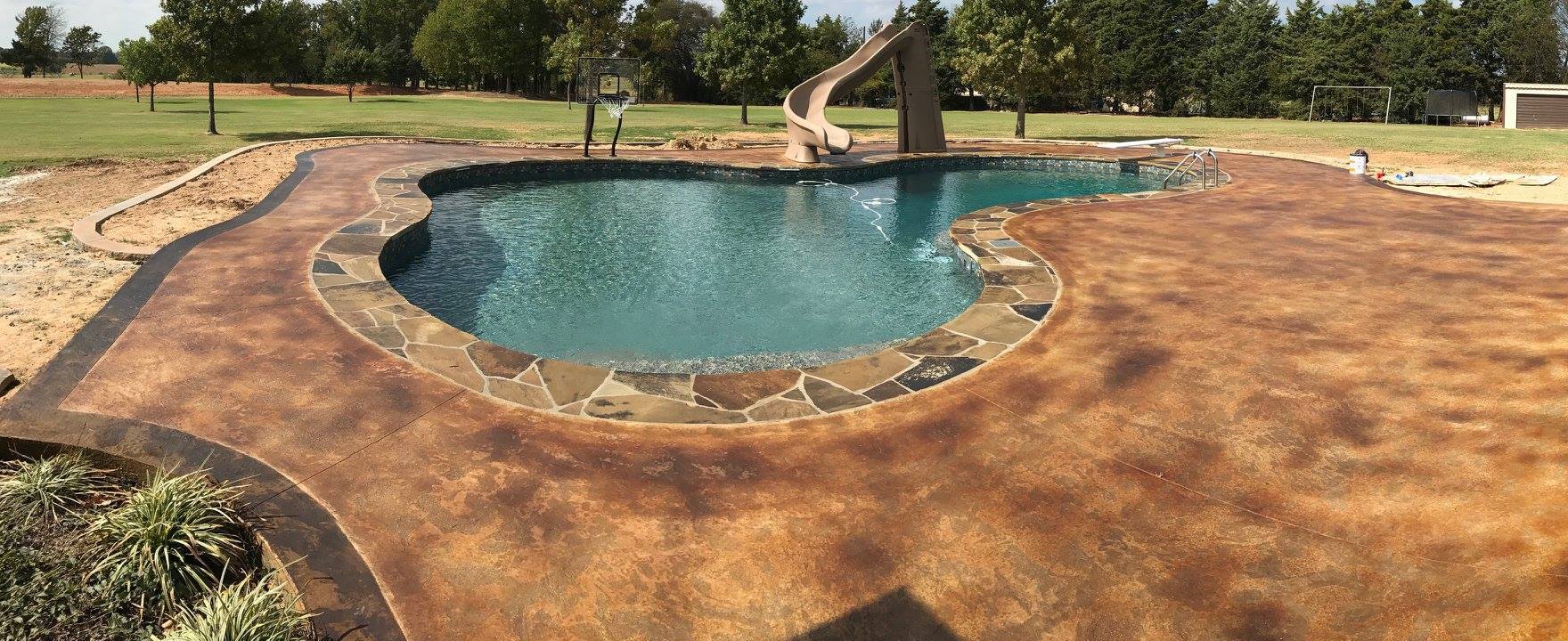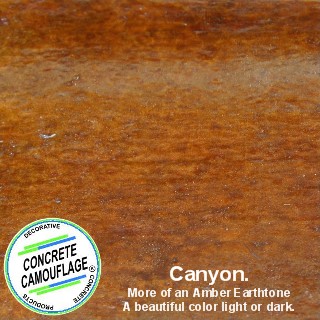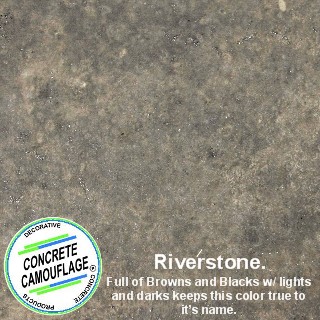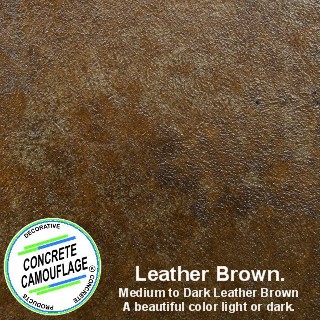How To Acid Stain Concrete With Rust Spots

Image Courtesy of DeLaughter's Decorative Concrete (and doesn't include rust spots)
Why Does Concrete Rust?
Why does concrete rust? Well, it actually doesn't at least not by itself.
Metal Objects
You'll find that concrete doesn't develop rust spots on its own. Instead, it receives the rust spots from objects placed on it or in it. As you know, metal chairs, planters or even a small piece of metal like a nail will rust when it rains. However, when these objects are touching the surface, the rust penetrates the pores of the concrete and fights to stay there. Even if these objects are later removed, the rust spot from them will remain.
Irrigation Systems
Rusting can also be caused by iron dissolved in irrigation systems like an underground water well. You'll want to look into different treatments depending on the type of iron found in water.
Pre-Staining Rust Removal Options
Although, a good acid stain can remove some or most rust stains (see section below), you still may want to remove rust before hand. In this case, some might recommend using stronger chemicals like oxalic acid to remove rust from concrete, but it's important to know that using any kind of acid/chemical on concrete expends the lime on the surface. Lime is the majority mineral that acid stains react with to create the color. So using an acid wash to remove a rust stain would result in a different kind of blemish where it stains lighter and in a larger area than the rust originally was. Almost every acid stain out there has no chance of adequately staining concrete that has been acid washed or acid etched.
For example, we are frequently asked if bleach can solve concrete rust woes. While this is an option, it's not necessarily one we recommend. Bleaching will help make the rust disappear, but it will also discolor your concrete. That means when you stain your concrete, the bleach spot will stain differently from the rest of the surface. Basically, you'll be trading one problem for another. The same goes for any other harsh cleaners.
Staining Rusted Concrete with Specific Colors



Instead, we recommend using your acid stain to cover up the rust spots. When you stain over the rust, in some instances the acid in the stain will remove the spot. If not, then using the correct colors will camouflage the rust spot, allowing it to blend in and disappear to the eye. However, this will only work with specific color stains. The medium to darker browns, blacks and sometimes even Riverstone stains are the best bet for covering up the rust spot. Many times the red-based stains will even work. Keep in mind that you'll have a more challenging time with the turquoise, greens and lighter colors.
Either way, we recommend performing acid stain tests of different colors before you commit to your entire concrete surface. Try our sample kits to help with testing prior to staining.
Once You've Picked A Stain Color
The steps for staining are the same as for any older concrete. Check out our step by step guide.
Get Creative and Highlight Concrete
Another option is applying a highlighting coat. To do this, stain your concrete floors with a light or medium color. Once that stain dries, apply a highlighting coat, by holding your sprayer wand higher than normal and raising and lowering it as you work side to side and back and out, with the same or a darker color. This technique helps the rust spots become a part of the character instead of a blemish, while creating more color variances, highs, lows, and mottling.
